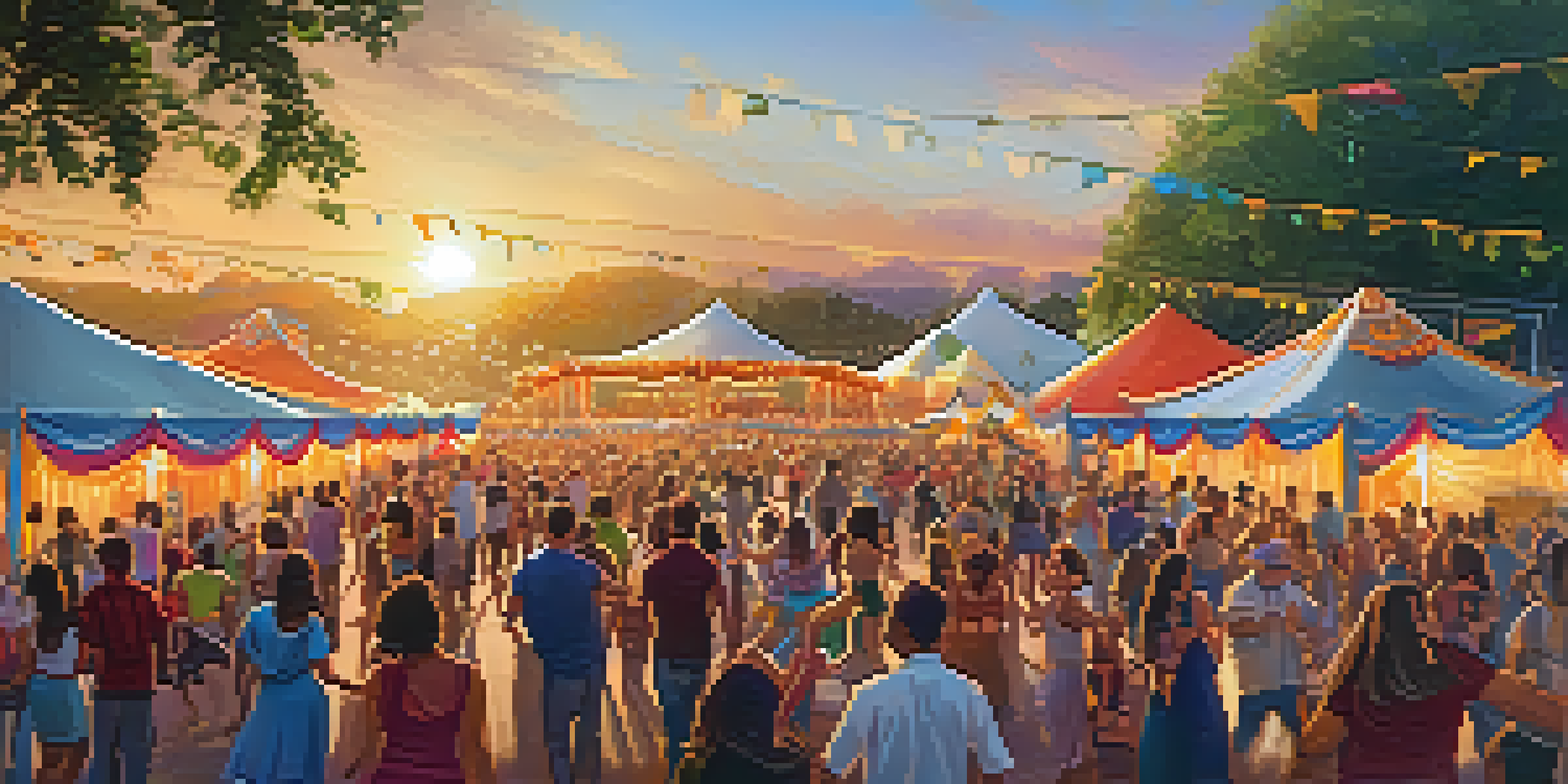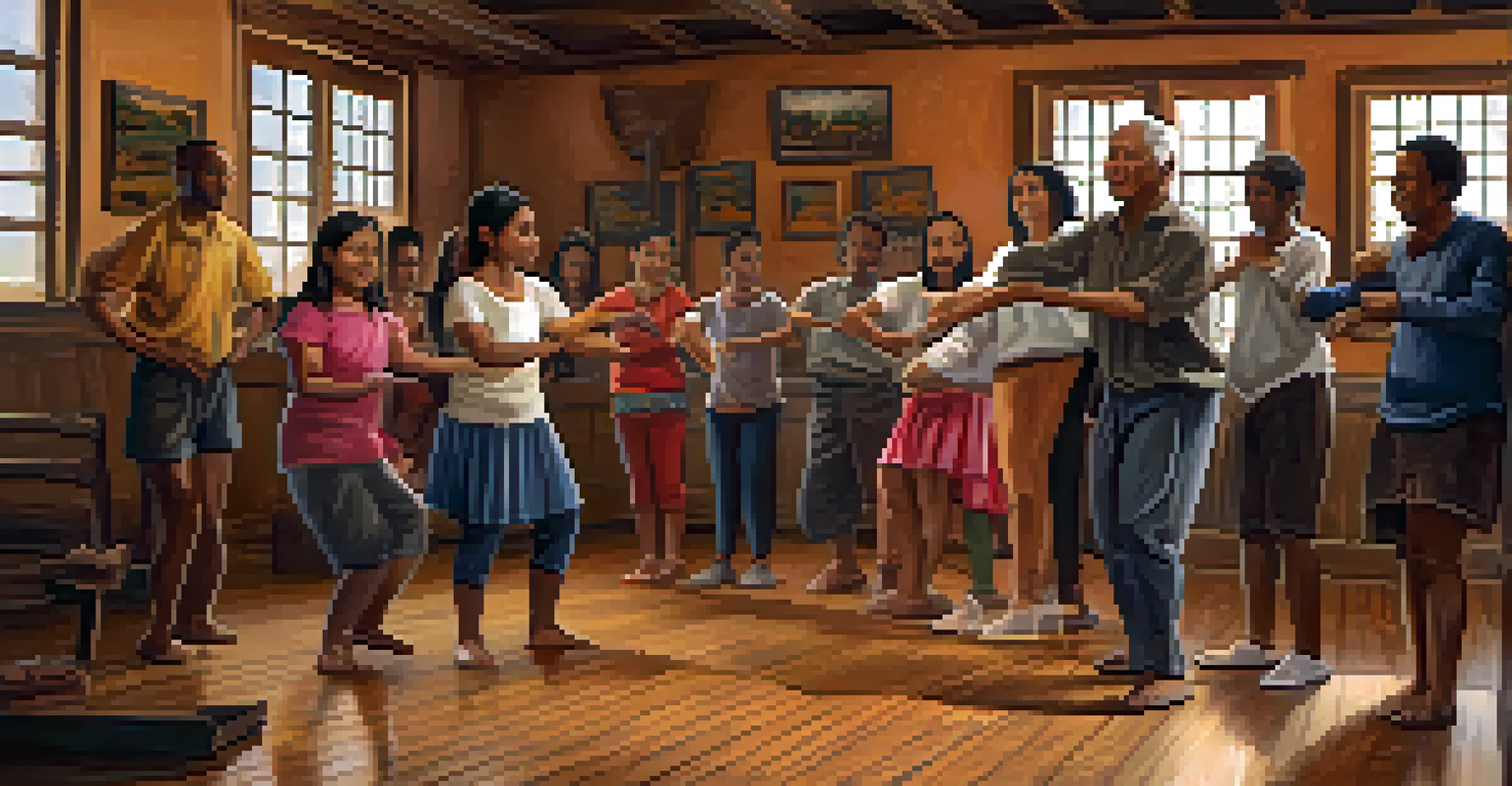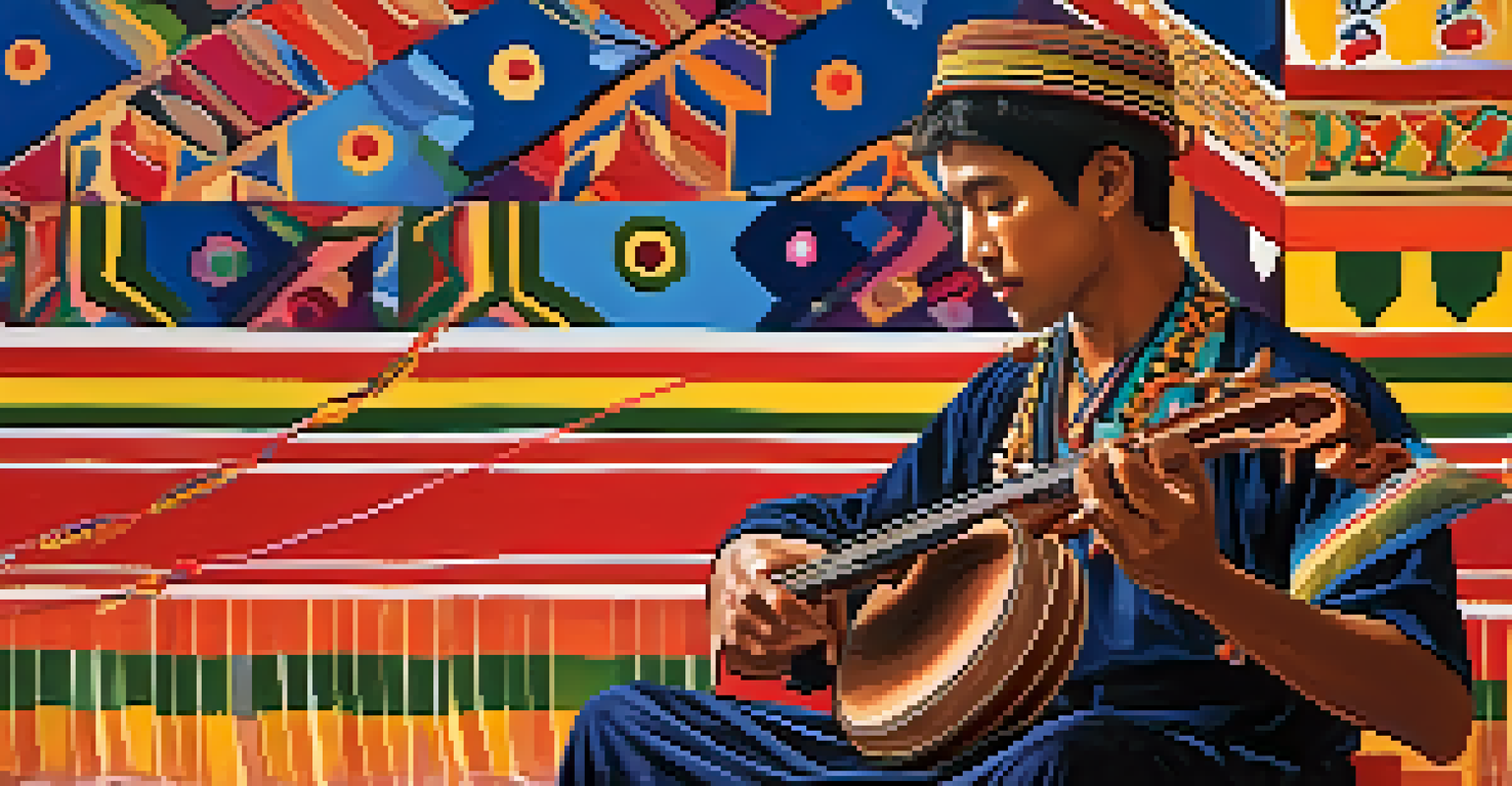Cultural Heritage and the Preservation of Dance Music Genres

Understanding Cultural Heritage in Dance Music
Cultural heritage encompasses the traditions, practices, and expressions that define a community, and dance music is a vital part of that. Genres like salsa, tango, and hip-hop are not just sounds; they tell stories of history, identity, and connection. Understanding this cultural significance is crucial for appreciating the depth of these musical forms.
Music is the shorthand of emotion.
Dance music serves as a cultural touchstone, reflecting societal changes and collective experiences. For instance, the evolution of electronic dance music mirrors advancements in technology and youth culture. By recognizing these connections, we can better appreciate how these genres shape and are shaped by their cultural contexts.
Moreover, cultural heritage is not static; it evolves over time. This evolution can lead to the blending of genres, creating new forms while also preserving the essence of the originals. This dynamic nature adds layers of complexity to our understanding of dance music and its cultural implications.
The Role of Dance Music in Community Identity
Dance music plays a pivotal role in forging community identity, often bringing people together through shared experiences. Events like dance festivals and local gatherings not only showcase music but also create a sense of belonging among participants. For many, these events are a celebration of their heritage and cultural roots.

For example, the rhythms of African dance music have long been a source of unity and expression within African communities. These genres often carry historical significance, acting as a reminder of struggles and triumphs. Through dance, individuals connect with their heritage while fostering community ties.
Cultural Heritage Shapes Dance Music
Dance music genres reflect the history and identity of communities, serving as a vital cultural touchstone.
In essence, dance music acts as a living archive of community stories. By participating in and preserving these genres, communities can maintain their identity and pass on rich traditions to future generations. This continuity is vital for cultural resilience in an ever-globalizing world.
Challenges to Preserving Dance Music Genres
Despite its importance, the preservation of dance music genres faces several challenges. Globalization and digitalization can lead to cultural homogenization, where unique sounds and traditions risk being overshadowed by mainstream trends. This dilution can diminish the richness of local music scenes.
Cultural heritage is a bridge to our past and a gateway to our future.
Additionally, economic pressures can hinder the preservation efforts of smaller, community-based music genres. As popular music dominates the market, local artists may struggle to find financial support or audiences for their traditional styles. This creates a cycle where cultural expressions are lost or diminished over time.
Moreover, the lack of documentation for certain genres can result in the loss of vital historical context. Many traditional forms of dance music are passed down orally, making it easy for nuances to fade away. Addressing these challenges requires a concerted effort from communities, artists, and cultural organizations to safeguard these musical treasures.
The Importance of Education in Preservation Efforts
Education plays a crucial role in preserving dance music genres for future generations. By teaching young people about the history and significance of these styles, we can instill a sense of pride and responsibility in them. Workshops, classes, and community events can help bridge the gap between generations.
For example, integrating traditional dance music into school curriculums fosters appreciation and understanding among students. It provides them with the tools to engage with their cultural heritage actively. This knowledge not only enriches their own lives but also encourages them to share it with others.
Challenges in Preserving Genres
Globalization and economic pressures threaten the preservation of traditional dance music styles.
Furthermore, educational initiatives can extend beyond the classroom. Community programs that invite musicians to share their craft can create a dynamic learning environment. These experiences promote intergenerational dialogue and ensure that dance music remains a vibrant part of cultural heritage.
Role of Technology in Preserving Dance Music
In today's digital age, technology offers unique opportunities for preserving dance music genres. Online platforms allow for the documentation and sharing of traditional music styles, reaching wider audiences than ever before. This accessibility can help foster interest and appreciation for lesser-known genres.
Moreover, social media has become a powerful tool for artists to showcase their work and connect with fans. Platforms like YouTube and Instagram enable musicians to share their dance music, creating a global community of enthusiasts. This interaction can spark renewed interest in traditional styles and encourage collaboration.
However, while technology can aid preservation, it also poses challenges, such as the risk of commercialization. Artists must navigate the balance between maintaining authenticity and appealing to broader audiences. Finding this equilibrium is essential for ensuring that dance music genres retain their cultural integrity.
Community Initiatives for Dance Music Preservation
Community initiatives are vital for the preservation of dance music genres, often leading the charge in safeguarding cultural heritage. Local organizations and grassroots movements work tirelessly to promote traditional styles through festivals, workshops, and educational programs. These efforts help keep the music alive and relevant.
For instance, cultural festivals that celebrate specific dance music genres not only entertain but also educate attendees about their history and significance. They create spaces for artists to perform and share their craft, fostering connections between generations. These events can be a source of pride and identity for communities.
Education Promotes Cultural Continuity
Educational initiatives are essential for instilling appreciation and ensuring the transmission of dance music heritage to future generations.
Additionally, collaborations between artists, educators, and cultural institutions can enhance preservation efforts. By pooling resources and knowledge, these partnerships can develop comprehensive strategies for keeping dance music genres alive. Such community-driven initiatives are crucial for ensuring that cultural expressions continue to thrive.
Looking Ahead: The Future of Dance Music Preservation
As we look to the future, the preservation of dance music genres will require ongoing commitment and innovation. It's essential to adapt to changing cultural landscapes while remaining rooted in tradition. This balance will be crucial for ensuring that these genres continue to resonate with new generations.
Engaging younger audiences through interactive platforms and participatory events can help bridge the gap between old and new. By creating spaces where traditional dance music can evolve and flourish, we can ensure its relevance in a modern context. This adaptability is key to cultural survival.

Ultimately, the future of dance music preservation lies in collective efforts from communities, artists, and supporters. By celebrating and safeguarding these musical traditions, we honor the past while creating a vibrant cultural tapestry for years to come.